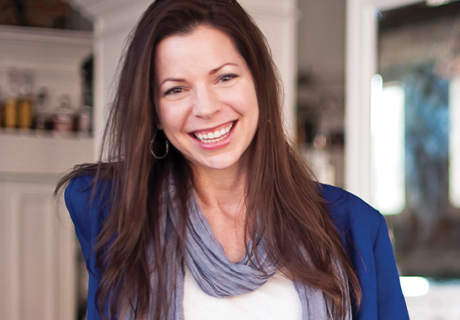
A linguist by education, Kate O’Neill has studied more than a dozen languages. Now, as founder and CEO of KO Insights, a strategic advisory and consultancy firm committed to improving human experience at scale, she spends most of her time talking “tech” with industry, business, and civic leaders to help build data-led and technology-driven human experiences. On Sunday, Oct. 24, she’ll kick off the 2021 HCD Expo with her keynote presentation, “A Future So Bright.” Here, O’Neill answers a few questions from Healthcare Design about her work, the ongoing digital transformation in the healthcare sector, and what moment from the last year gives her hope.
Healthcare Design: Describe your work in 10 words or less.
Kate O’Neill: I want to say something like “tweeting about robots” but instead I’ll offer “helping humanity prepare for a future of change at scale.”
You’ve got a new book coming out, “A Future So Bright: How Strategic Optimism Can Restore Our Humanity and Save the World.” How do you define strategic optimism?
Strategic optimism means envisioning the best outcomes and knowing that by acknowledging that these outcomes are possible, we are ethically obligated to pursue them. It’s both a model and a mindset that requires a full and bold acknowledgement of where we are, what we need to do about it, and what the best possible outcomes might be. And then it necessitates a commitment, while mitigating the risks and harms we’ve identified, to work as hard as possible through careful planning and alignment of resources to achieve those best possible outcomes. What’s different about that approach is that we so often shy away from what we think the best outcomes might be, and end up giving full voice to our cautions but not to our hopes. That limits our progress right out of the gate and means we’re often the saboteurs of our own greatest chances for success.
On a human level, what do you find we fear most about the rising use of technology and data?
When asked about technology in the future, a lot of people will talk about their fears of a robot uprising (especially whenever one of those new acrobatic robot videos goes viral), but in the near term that’s not really what most people are stressed about. They’re more worried about what they perceive as technology’s more imminent threats: sweeping changes like job displacement and replacement, but also the growing fear of being overwhelmed by technological change that they can’t keep up with, and perhaps also the sense of being surrounded by soulless automation that removes human warmth and connection. Most of these fears arise from similar conflicts—an existential disconnect between technology experiences and what feels most fundamentally human. I don’t think in every case that disconnect is actual, but it is perceived. And it deepens the call to experience creators to make sure they are thinking about human needs and human meaning in the process of building interactions at scale.
How has the COVID-19 pandemic accelerated the need to consider the challenges we’ll face in the future, and where should our focus lie?
Indeed, digital transformation is happening for many industries in a much more accelerated way as a result of the pandemic. In healthcare, this pandemic has forced a lot of discussions about availability of care, coverage, and trustworthy information. It’s also given us a glimpse into a future with increased digital and hybrid health services and the need to design better experiences around that future. But it has also been a foreshadowing of some of the public health concerns we’re going to face with accelerating climate change. The improvements we make may shape how we care for large populations of people affected by similar issues all at once, whether that’s an infectious virus, wildfire smoke inhalation, mold from flooding, or whatever else. It’s daunting but important work that is now both urgent and ongoing.
What’s one emerging tech trend that you think should be on the healthcare design industry’s radar?
I’m very excited about augmented reality (AR), which is a technology similar to virtual reality (VR) but whereas VR generally requires headsets or other fully immersive equipment, AR can offer layers of contextual meaning through a phone screen or other device. I can envision great applications in the design of healthcare experiences, such as helping in the patient experience lifecycle to enable someone to better visualize their underlying anatomy to understand an injury or a new treatment plan. In the caregivers’ experiences, AR could help by providing just-in-time information to reduce strain and fatigue; and AR could benefit the medical providers’ experiences both in patient interactions and apart from them. It feels like a revolution in meaningful experiences just poised to happen.
Looking back on the past year, what’s one thing that gives you hope for the future?
How many people—in how many ways—have thought differently about other people’s needs and tried to modify their decision-making for the good of others. Not in every case, obviously, and not perhaps as much as would have been helpful. But in vast parts of the population, people really thought about how their day-to-day actions would affect other people and amended their lives accordingly. To me that shows great possibility for our understanding that everything is connected and that our futures are tied up with one another’s.
from HCD Magazine https://ift.tt/30KYRFG
via IFTTT

No comments:
Post a Comment